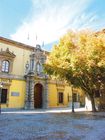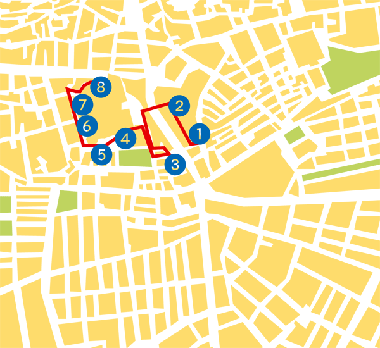
Carlos the Fifth, considered by many as the most European of Spanish Kings, continued the reformation work of his grandparents the "Reyes Catolicos".The Rennaissance style roundly imposes itself on this itinerary which brings to light the following monuments and corners of the city: the old Convento del Carmen (now the Town Hall); Corral Convento del Carbon; Alcaiceria; Plaza de Alonso Cano; Plaza de las Pasiegas; Façade of the Cathedral; Puerta del Perdon; and the Cathedral. With the passing of the sixteenth century,the urban plan of the modern capital little by little superimposes itself upon the former Muslim one. The Cathedral,considered to be the first Renaissance building of Spain is the work of Diego de Siloé. In the beginning, the desire of Carlos the Fifth was that it should shelter the pantheon of the first hispanic dynasty, as he considered the Capilla Real to be insufficient. Initiated by Egas and concluded by Diego de Siloé, the grandiose temple was finalised in 1667 with a barroque façade by the Granadine Alonso Cano. Very near the Cathedral one finds the Corral de Carbon, built in 1336 as a Muslim marketplace. After the christian conquest it was sold at public auction. At that time it came to be known as the Corral de Carbon (the Charcoal Yard) now that the charcoal merchants would stay in this building. It was also used as a theatre at the beginning of the sixteenth century.
| 



 Ayuntamiento de Granada
Ayuntamiento de Granada

